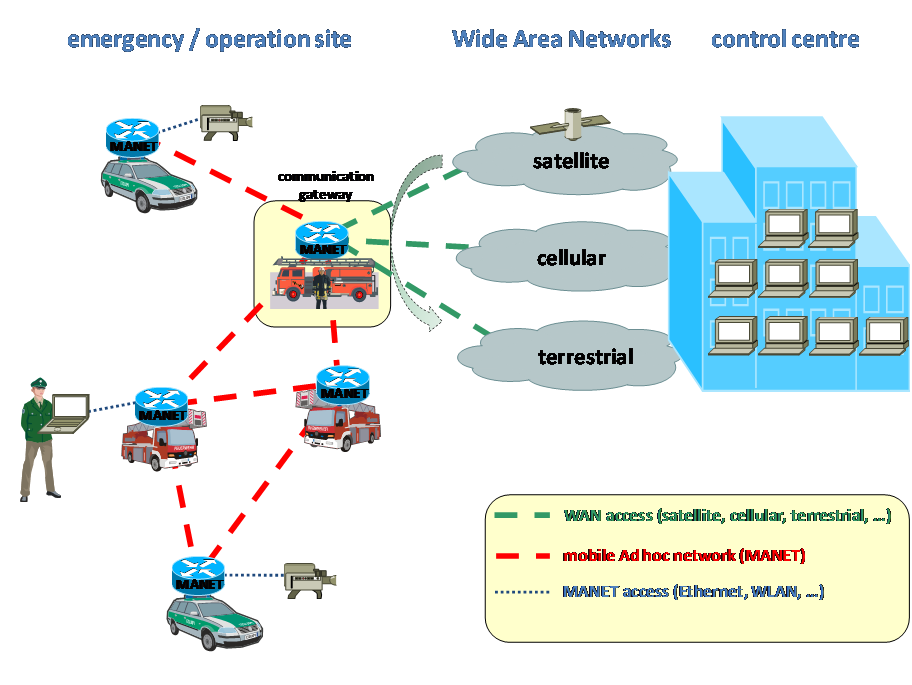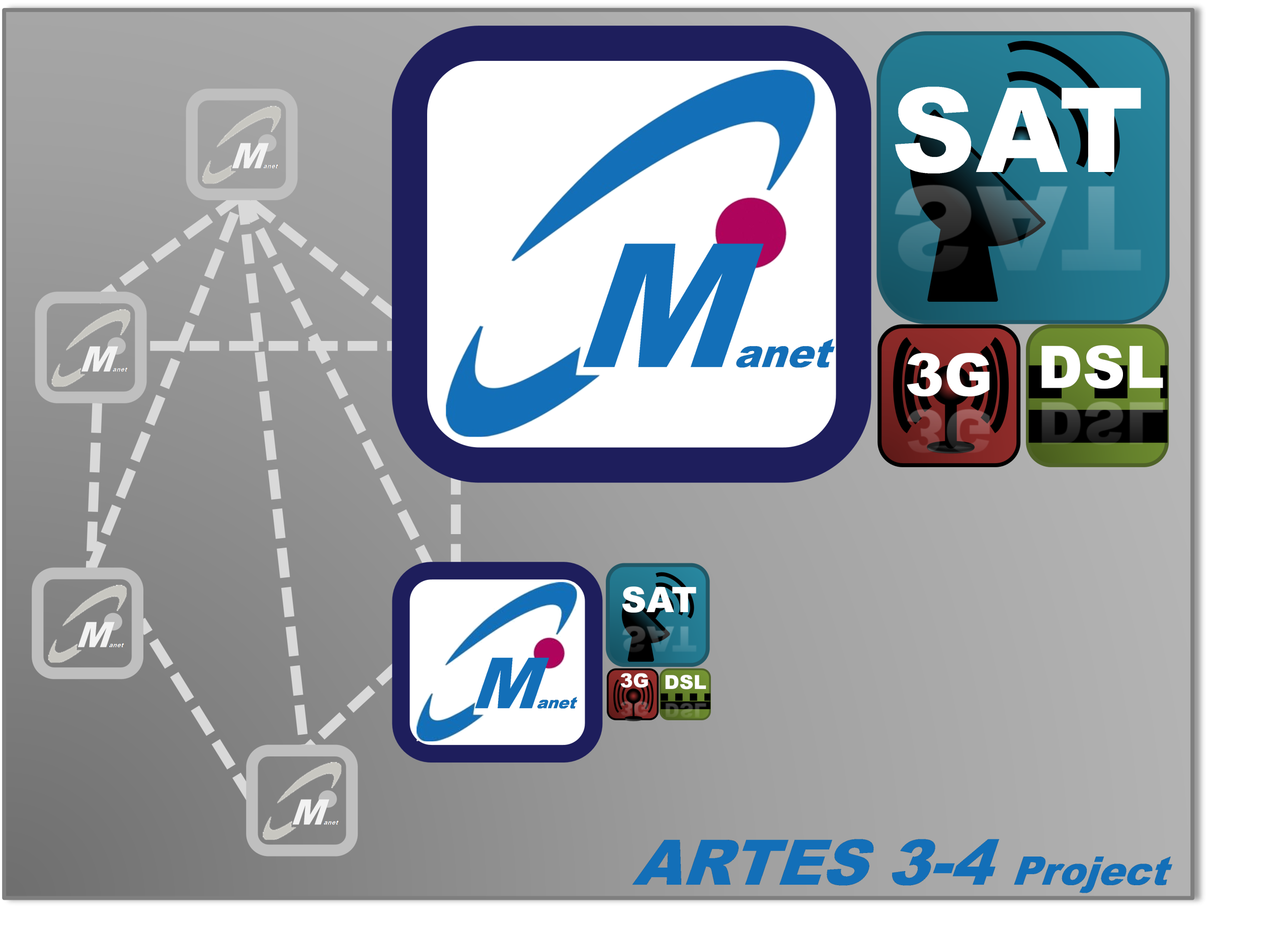PAGE CONTENTS
Objectives
Within a previous ARTES 5-2 project a gateway prototype was developed. The objective of this project is the further development of this prototype to obtain a product of a mobile broadband communication gateway for public safety organizations which connects Mobile Ad hoc Networks (MANETs) with different broadband Wide Area Networks (WANs), such as satellite, cellular or terrestrial networks. Its core feature is the connection of MANETs to different type of WANs. To implement an efficient and reliable connection the gateway needs to perform an integrated mobility and QoS management as well as security functionality.
The development concerning mobility management focuses on providing continuous connectivity between end user devices at the operation site and their respective remote communication partners, while switching the WAN technology or the network point of attachment of end user devices within the MANET. This way the standard connections and, perhaps even more important, the VPN connections to the control centre will remain always active throughout the duration of a public safety operation.
The figure below illustrates the usage of the gateway to be developed to provide WAN connectivity, e.g. via satellite, to mobile end user devices connected to a MANET during a public safety operation.

(The above is a sample picture).
Challenges
Among others the following key issues are addressed in the project:
- The demand of public safety organizations for secure, flexible broadband communication at the operation site as well as between the operation site and the control centre.
- Providing broadband communication that can be used for any data, video or voice applications using the Internet Protocol.
- Providing continuous connectivity to mobile devices at the operation site.
- Developing a solution that addresses the aspects of mobility, security and traffic prioritization fulfilling the user requirements of public safety organizations.
- Providing new features, a user interface and improving the performance of the prototype.
Plan
The project has a total duration of 20 months. The project work is mapped to five work packages:
- Project and Quality Management: Overall project management including project planning, administration, etc.
- Consolidation of the system requirements: Specification of the final requirements addressing the public safety sector
- Design of the system architecture: Design of the system architecture, considering the mobility, security and QoS requirements as well as the system handling and performance.
- Implementation of the final system architecture: Implementation of the final system architecture including improvement of the mobility, security and QoS management
- Test and verification: Verification of the final product
Current Status
The project started on May 1, 2017. At the beginning of the project the user requirements due to the communication of the target customers have been identified. For the identification of the user requirements IABG interviewed several public safety organizations. The interviews comprised a wide spectrum of interview partners providing an international and comprehensive view of the public safety sector.
Based on the interview results currently a set of requirements are being generated and further import functionalities are being specified.
Suitable technologies for the new functionalities are being identified for solving the issues in scope of the project. The trade-off between possible technologies to achieve the required functionalities is being outlined. The technologies to be implemented will be selected and the system architecture will be described. Next, the test plan to achieve a final and fully operational product will be generated.
Companies

